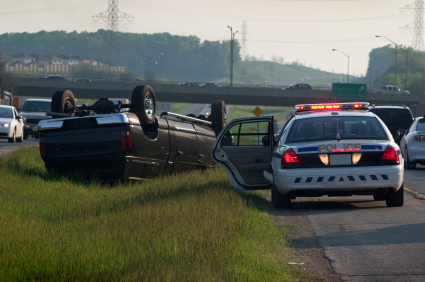The Illinois legislature changed a section in the Vehicle Code in 2014, establishing severe penalties for driving with a suspended or revoked license.
Driving while license suspended, 625 ILCS 5/6-303(a), is in most situations a Class A misdemeanor. The maximum penalty for such an offense is up to one year in jail (364 days).
But under a new provision of Section 6-303, a person who is involved in a motor vehicle accident while driving on a suspended or revoked license can be charged with a felony.
The new provision says that on a second or subsequent offense, the offender shall be sentenced as a Class 4 felony offender. See 625 ILCS 5/6-303(a-3). The accused can be sentenced to up to 30 months of probation, or 1-3 years in the Illinois Department of Corrections.
The felony conviction cannot be expunged or sealed. In addition, the conviction for 6-303 will cause the Secretary of State to extend the underlying suspension.
This amendment is important because it takes a very large class of individuals and subjects them to an unexpected, harsh punishment.
When someone is arrested for DWLS or DWLR, felony charges usually happen only when the suspension is related to driving under the influence. For example, the 6-303 charge is a felony if the driver is revoked for a DUI conviction (625 ILCS 5/11-501), suspended pursuant to a statutory summary suspension (625 ILCS 5/11-501.1), revoked for leaving the scene of an accident involving personal injury or death (625 ILCS 5/11-401), or revoked for reckless homicide (720 ILCS 5/9-3).
But now a person can be charged with the felony even where the loss of driving privileges is rather innocent, like too many moving violations in a year.
The amendment reads as follows:
A second or subsequent violation of subsection (a) of this Section is a Class 4 felony if committed by a person whose driving or operation of a motor vehicle is the proximate cause of a motor vehicle accident that causes personal injury or death to another. For purposes of this subsection, a personal injury includes any Type A injury as indicated on the traffic accident report completed by a law enforcement officer that requires immediate professional attention in either a doctor’s office or a medical facility. A Type A injury includes severe bleeding wounds, distorted extremities, and injuries that require the injured party to be carried from the scene.
625 ILCS 5/6-303(a-3).
The term, Type A injury, comes from the Illinois Traffic Crash Report that law enforcement officers are required to fill out after an accident. The police officer is supposed to check a box concerning the type of accident:
- Type A – injury is reported and apparent.
- Type B – injury is reported but not apparent.
- Type O – no injury reported, none apparent.
Under this provision, anytime another person from the accident is transported to the hospital, it could result in felony charges.
But interestingly, the driver may have a defense if he or she was not at fault for the accident. The statute says the offense is a felony if the person’s driving was ‘the proximate cause.’ This is an important distinction because other criminal statutes hold the person responsible if their driving was ‘a proximate cause,’ which is much broader.


